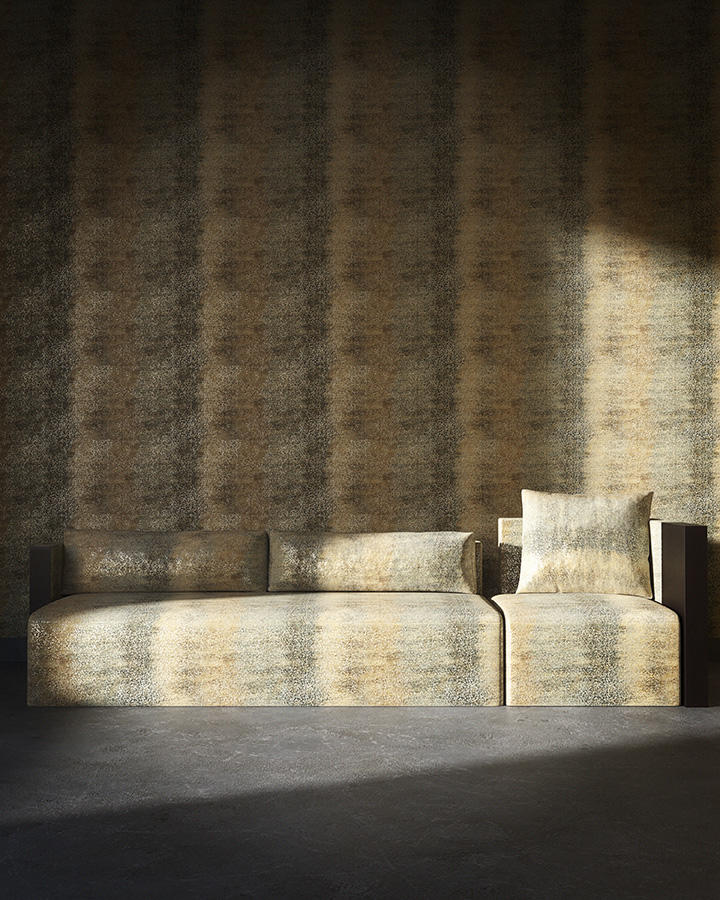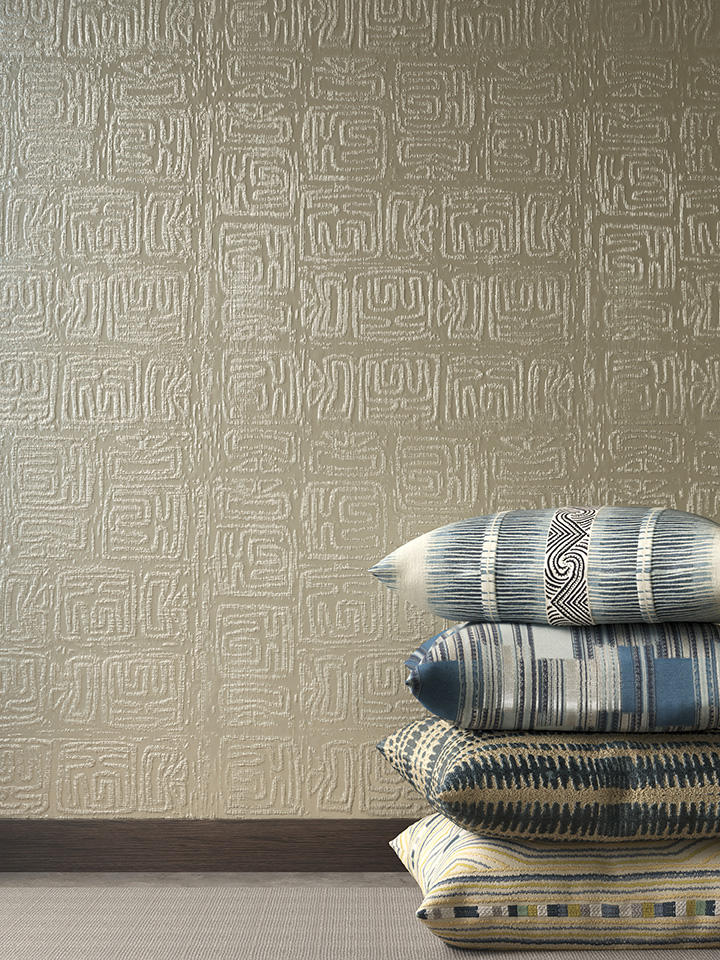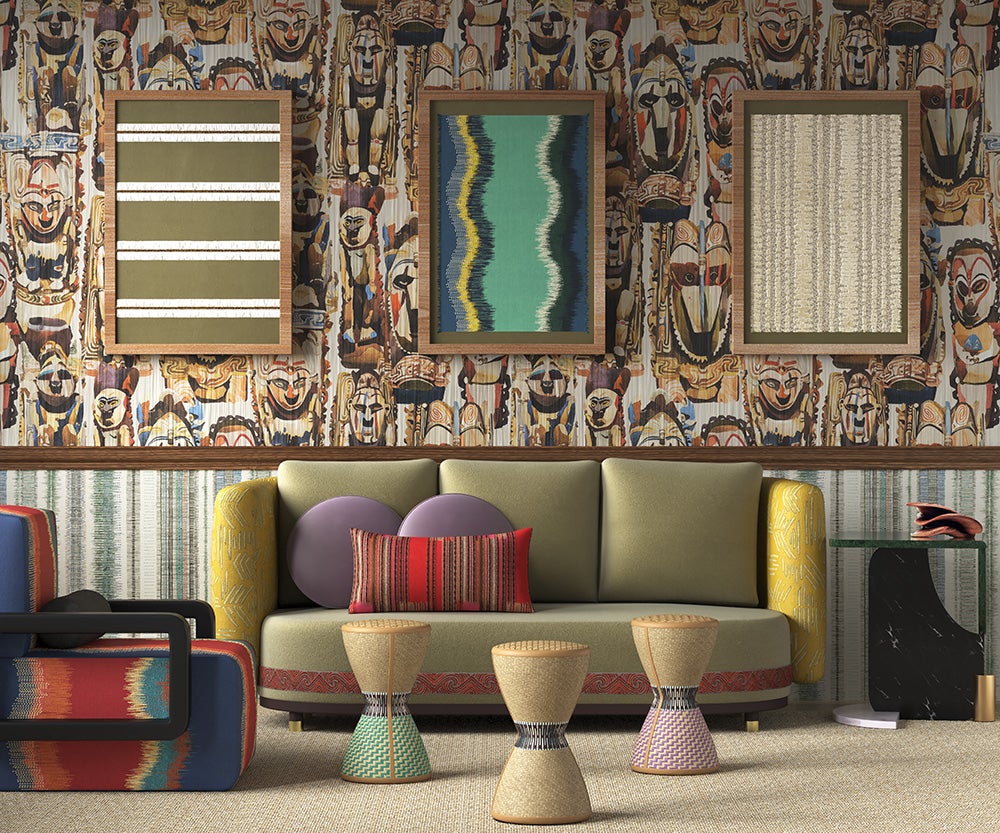S. Harris has teamed up with the Black Artists + Designers Guild to launch Orejen, a collection of textiles, wallcoverings and trimmings. The line’s name is a play on the word origin and was designed by five BADG members—Malene Barnett, Beth Diana Smith, Linda Hayslett, Rayman Boozer and Erin Shakoor—in collaboration with Jodi Finer, creative director and chief brand officer of S. Harris. The collection is meant to evoke the light, colors, textures, and topography of East Africa, Southeast Asia and the the Pacific Islands—regions that are revered for their rich textile and craft traditions, yet often go uncredited for their influence on modern textile design.

“Our attempt was to honor groups and cultures that are typically underserved in the design world,” says Boozer. “Western society tends to take an idea, like ikat for example, and we plaster it everywhere, with no thought to its provenance. [In creating the Orejen collection], we were very thoughtful in our interpretations of the designs that inspired us. We are not copying these cultures—we are building on what they’ve provided.”
Barnett, BADG’s founder and the only collaborator on the line who is an artist and not an interior designer, hopes the collection can shine a light on the cultural appropriation that happens in the design industry. “Being from an indigenous community myself, historically these voices and their creativity have not been prioritized,” she says. “We want to encourage the design community to become informed and bring that same community closer by engaging in deeper conversations about people, culture, materials and traditions.”

The collaborators agree that the process of creating a cohesive product range with so many voices working together was challenging at times. “As creatives, we all have our own vision, so you have to adapt in order to create a shared vision,” says Smith. “But the benefits far outweighed the challenges. It was like a think tank where you had the ability to hear the different perspectives of some of the best designers and feed off of each other's creativity.”
The collection came together when the group honed in on four specific regions: Papua New Guinea, New Zealand, the valleys of Bhutan and the shores of Zanzibar. “When we chose those areas for our themes, I was so inspired by the shapes we were seeing,” says Hayslett. “It was interesting to see that, though my interior design projects lean more contemporary and modern, the shapes I use in my work are there throughout these different traditions and heritages. They are just simplified for our modern times.”
Shakoor is hopeful that the collection can be an example of how product lines can look and be developed moving forward. “Creative industries—from design to fashion to music—all need to unlearn bad habits and be retaught about the impact of their [products] on the people and communities that inspired their work,” she says. “I think [other brands] can look to this and see how luxury collections can be improved, more respected and better-selling when there is accurate sourcing and storytelling.”
Homepage photo: Courtesy of S. Harris





























